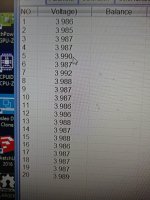I am curious about what issues would occur if I wanted to use 28S, like Zero motorcycles, but...using two common 14S packs..
If the packs are connected/separated electrically by a large DC switch(s), then I imagine it would be very easy to charge the two sub-packs with readily available 52V chargers. That being said, I'm also sure it would not be difficult to stack Meanwell power supplies to achieve 28S / 4.1V x 28 cell-strings = 115V when fully charged.
Brushless IPM motors typically can run at a wide range of voltages, and I suspect there is no problem finding a wide selection of models that would work well at 28S.
I guess the biggest question is which controllers would be appropriate for 115V and maybe 100A-200A?
Also, would I have to remove the 14S BMS's and run with no BMS's?
Also, is there anything I missed?
If the packs are connected/separated electrically by a large DC switch(s), then I imagine it would be very easy to charge the two sub-packs with readily available 52V chargers. That being said, I'm also sure it would not be difficult to stack Meanwell power supplies to achieve 28S / 4.1V x 28 cell-strings = 115V when fully charged.
Brushless IPM motors typically can run at a wide range of voltages, and I suspect there is no problem finding a wide selection of models that would work well at 28S.
I guess the biggest question is which controllers would be appropriate for 115V and maybe 100A-200A?
Also, would I have to remove the 14S BMS's and run with no BMS's?
Also, is there anything I missed?


